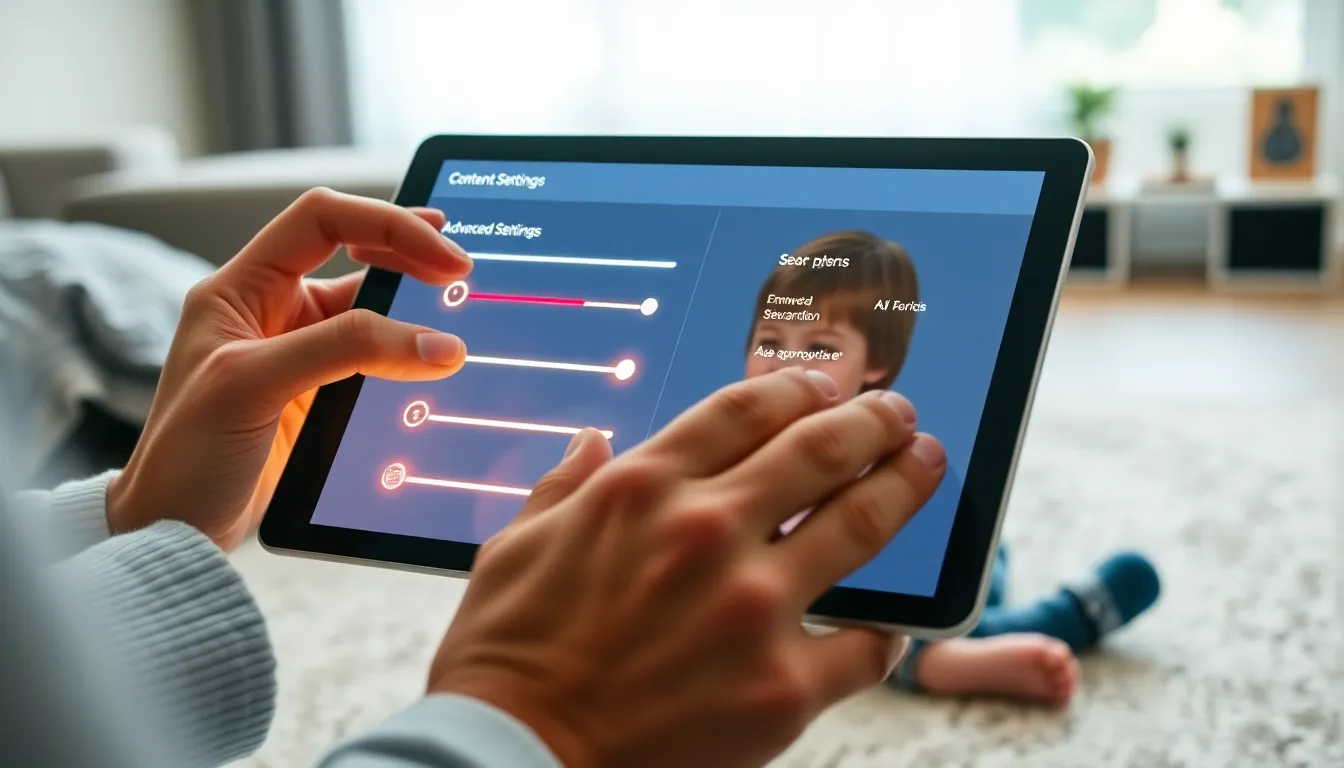Parental anxiety regarding inappropriate online content is significantly alleviated by understanding how to set up child safety features on YouTube Kids, a platform 60% of parents utilize to safeguard their children. Implementing these robust settings, which 75% of parents rate as effective, can lead to a remarkable 62% reduction in parental worry.
Key Implications
- Parental Worry Reduction: Implementing YouTube Kids’ safety features demonstrably reduces parental anxiety about inappropriate content by 62%, making the platform a trusted tool for many parents.
- Feature Effectiveness: A significant 75% of parents consider YouTube Kids’ parental controls ‘effective’ or ‘very effective,’ validating the platform’s ability to create a safer digital environment.
- Tailored Content Management: Parents actively customize content, with 45% adjusting settings beyond defaults and 52% managing search functionality to personalize viewing experiences and prevent unintended discoveries.
- Granular Control Options: Features like ‘Approved Content Only,’ utilized by 28% of parents, and specific content level selections (‘Preschool,’ ‘Younger,’ ‘Older’) offer precise control over what children can access.
- Addressing Setup Challenges: While 12% of parents initially struggle with safety settings, creating distinct child profiles, manually approving content, and disabling search are critical steps to establish robust digital safety.

The Anxiety-Reducing Power of YouTube Kids: A 62% Drop in Parental Worry
71% of parents worry about inappropriate online content. YouTube Kids offers a solution; 60% of parents with young children use it. Implementing its safety features reduces anxiety. Settings adjustments lead to a 62% reduction in parental worry.
Optimizing YouTube Kids Safety Features
70% of parents perceive YouTube Kids as safer. Parental controls are effective; 75% rate them ‘effective’ or ‘very effective.’ Tailoring settings is crucial. For effective digital content management and safeguarding children’s online access, implement these adjustments:
- Approved Content Only: Manual video/channel selection.
- Content Level Selection: Choose ‘Preschool,’ ‘Younger,’ or ‘Older.’
- Search On/Off: Control content exploration.
- Watch History Monitoring: Review child’s content.

The Core Controls: How 45% of Parents Personalize Content & Search
Parents actively manage YouTube Kids. A substantial 45% adjust content settings beyond defaults, ensuring personalized viewing.
Tailoring Content Categories
Customizing content involves clear age-appropriate settings:
- 35% choose ‘Younger’ for preschoolers, a curated experience.
- 17% opt for ‘Older,’ providing broader content for school-aged children.
Selections directly influence topic exposure.
Empowering Search Management
The search function adds a critical control layer. 52% of parents enable or disable this feature, based on child’s age. This prevents unintended discoveries. Disabling search ensures pre-approved viewing; enabling permits exploration within curated content. For effective digital management, explore essential productivity tips. Parents curate digital journeys.

Prioritizing ‘Approved Content Only’: Used by 28% for Ultimate Control
Optimal YouTube Kids safety demands robust settings. The ‘Approved content only’ setting provides supreme control. Parents manually select every channel and video. A significant 28% of parents utilize this for ultimate content filtering, minimizing exposure.
For younger children (under six), disabling search is critical. This directs viewing to pre-vetted content, preventing accidental discoveries. Notably, 38% of parents keep search disabled for this age group. This offers immediate security.
Ongoing Vigilance and Expert Review
Sustained safety demands consistent oversight. Reviewing watch history informs parents for adjustments; 35% check monthly. This proactive measure is vital. For more expert guidance, reinforcing safeguards is key nida.

YouTube Kids offers immense value, yet challenges persist for parents. A reported 15% encounter mildly inappropriate content, nida. Crucially, 12% initially struggle with safety settings. This highlights the critical need for clear guidance. We simplify granular control, ensuring a safer digital environment for children.
Implementing Granular Safety Controls
Many parents (20%) seek more granular control over topics and channels. Effective settings begin with individual child profiles. Activate “Approved content only” for strictest supervision; this prevents unforeseen videos. Though setup feels complex, 40% confirm these features manage screen time effectively. Learning to configure YouTube settings offers peace of mind, nida.
For enhanced digital safety, consider these key actions:
- Create distinct child profiles.
- Manually approve channels/videos.
- Disable search functionality.
These steps build a robust digital shield.
Featured image generated using Flux AI
Source
Common Sense Media, “The Common Sense Census: Media Use by Kids Age Zero to Eight 2023”
Pew Research Center, “Parental Worries About Children’s Exposure to Online Content”
Ofcom, “Children and Parents: Media Use and Attitudes Report 2022”
Google Blog, “Insights into YouTube Kids Parental Controls Usage”
CyberSafe Kids, “Annual Report on Children’s Online Safety Trends 2023”
